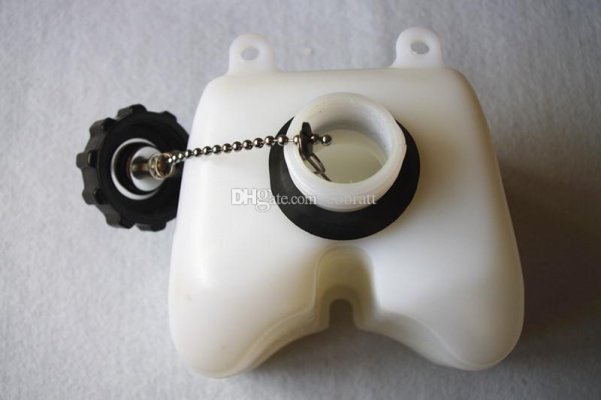I do not think the tank will be ABS as gasoline will wreck it. Do a google search.
http://www.gilsoneng.com/reference/ChemRes.pdf
I think you will find the tank is made of polyethylene, most likely high density polyethylene [HDPE]. Polyethylenes, all of them , are not good candidates for gluing of any kind without special techniques. They can be hot air welded, similar to gas welding except using hot air. Best is something like Nitrogen for a non reactive gas.
+1 I agree with C lectric, most likely not ABS, mostly likely HDPE. If you can manage to carve a sliver off a mounting tab there is a destructive burning test that can help you determine what it is. Obviously don't do that around the fuel tank!
https://www.injectionmould.org/2019/04/02/plastic-material-identification/
Its best to do a burn test with a clean burning torch rather than a match so you don't get a confused odor. PE will be so distinctive you will recognize it immediately as the odor of smoke from a candle that has just been blown out.
Does the tank look something along the lines of this?

It is a fuel tank from later years Yamaha 2 HP. Yours could be much older and therefor differently shaped or colored. One other possibility, but I don't have the experience to have seen it, is that in the early days of making plastic fuel tanks, before the more modern HDPE's became the norm, there were two other materials used - a crosslinked PE and nylon. Crosslinked PE is virtually impossible to repair. It has the impossible glueing/epoxy issues of HDPE and will not fuse under hot air welding. (I'm not sure if it was ever used in the blow molding setting required to make a tank like you have.) Nylon gives rise to some possibilities of repair, it can be welded with hot air but I have no experience with repairing it in that manner. It should be able to be repaired with epoxies solutions rated for fuel.
I don't know how common hot air welding equipment is where you are. It is basically a hollow soldering iron hooked to a regulated low pressure air supply. They are specialized and here in the US a bit expensive (not something most handymen would have, usually only repair/fabrication shops specializing in working with those plastics. Like other specialized forms of welding, there is a bit of a learning curve.
BTW, attempting to use a torch (even if you have the tank empty of vapor) will be self defeating as the heat required to melt/fuse the tank and filler will cause the plastic to ignite and degrade, making it a very brittle repair that may not even hold fuel after its first impact/vibration.
There are products available here in the US that claim to bond to HDPE, but I wouldn't trust them to work. I don't know what those products' availability is in your neck of the world. Generally they seem to be types of expoxies. Some of the products talked about above (such as the products used to seal aircraft wing tanks) are a two component crazy sticky product that might temporarily work with the plastic. These will be difficult to find locally, unless you have access to a company that for example, sells everything needed to build a kit aircraft to the public.
Your very best bet will be to find a new replacement tank, or an intact used tank to replace yours.


 )
)